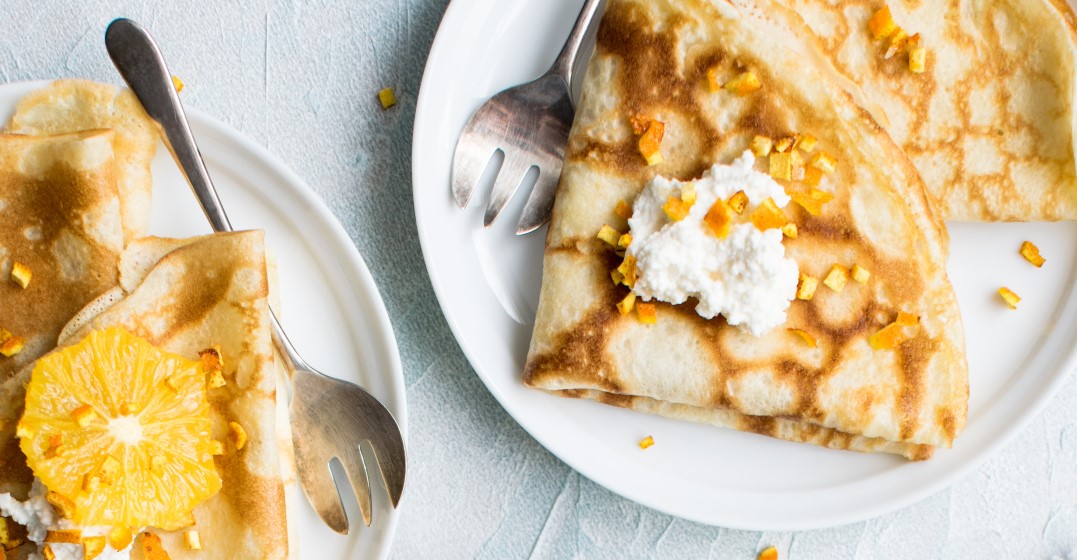What is la chandeleur in France?
Published on November 10, 2020 / Updated on January 8, 2024
In the mood for crêpes? In France, you normally have to wait until the 2nd of February to celebrate la chandeleur. But why that day? And why make crêpes? And, do you have the right equipment to make them? Read on to find our what is la chandeleur in France.
Originally, this festival was pagan and the crêpe would symbolize the sun finally returning after the long winter months. For centuries, farmers thought that if they did not make crêpes on the day of this festival of light, their wheat would be damaged. The term chandeleur, which comes from candles (chandelles in French), dates back to Roman times, when, on the occasion of annual festivals, the dead were honored by watching over them with candles and torches.
In the 6th century, the Christian popes transformed this old pagan rite into a Christian feast, which, 40 days after the birth of Christ, celebrates his presentation in the temple. Blessed candles or “candlesticks” (chandelles) were carried in procession and it was then necessary to take these candles home, taking care that they did not go out. They were believed to have certain powers, such as the power to ward off evil spirits, bad weather, death and other demons.
La chandeleur (Candlemas) is a different festival from Mardi Gras (Pancake Day), which is always celebrated on a Tuesday (Mardi), before Lent for Christians. On Mardi Gras, we often eat crêpes, but it is also the time for many other pastries such as bugnes.
You will find millions of them on the Internet: easy, low-fat recipes, with beer, rum or orange blossom flavoring. You will also find them on flour packets that are sold in large quantities at this time of year and which are spread out on all the shelves of French supermarkets. I suggest a very simple one:
Ingredients:
250 g of flour
2 eggs
a glass of milk
a glass of water
2 tablespoons of oil
1 pinch of salt
Preparation:
1. Mix the flour and the eggs, then gradually add the milk and water.
2. Mix well to avoid lumps.
3. Add the oil and salt (optional).
The typical French vocabulary word to remember when making crêpes: don’t make your mixture with grumeaux (lumps). Grumeaux is a French word you will only use in cooking.
Once your crêpe batter is ready, pour a ladle (une louche) of crêpe batter into a pan. You shouldn’t use just any pan. There is a special pan for crêpes, which is simply called a crépière (pancake pan).
Once the mixture is in the pan, the first side must brown, and then the crêpe must be turned over. Of course, you can’t do this with a spatula, no, the pancake has to be jumped or flown. Then, we take the pan, we check that the pancake doesn’t stick too much and then we go…
Don’t worry if it ends up on the floor or the ceiling, we always say that the first one is a failure!
Did you know that you have to turn over your crêpe by holding your pan in your right hand while holding a gold coin in your left hand? There is also talk of a Louis d’or, a coin made under Napoleon in the 19th century, which is now worth more than €300.
If the crêpe falls back into the pan after being thrown without being crumpled, it will bring you luck all year round. At least, this is what they say in France.
The recipe given above contains no sugar, so you can add sugar, chocolate spread, jam, whipped cream… Trust your gourmet inspiration! Then, there are two types of crepovores: the one who rolls his crêpe, and the one who folds it in four. I’m afraid it’s like “la bise”, there are no very clear rules about it.
Now it’s up to you! You can do it even without Louis d’or!
